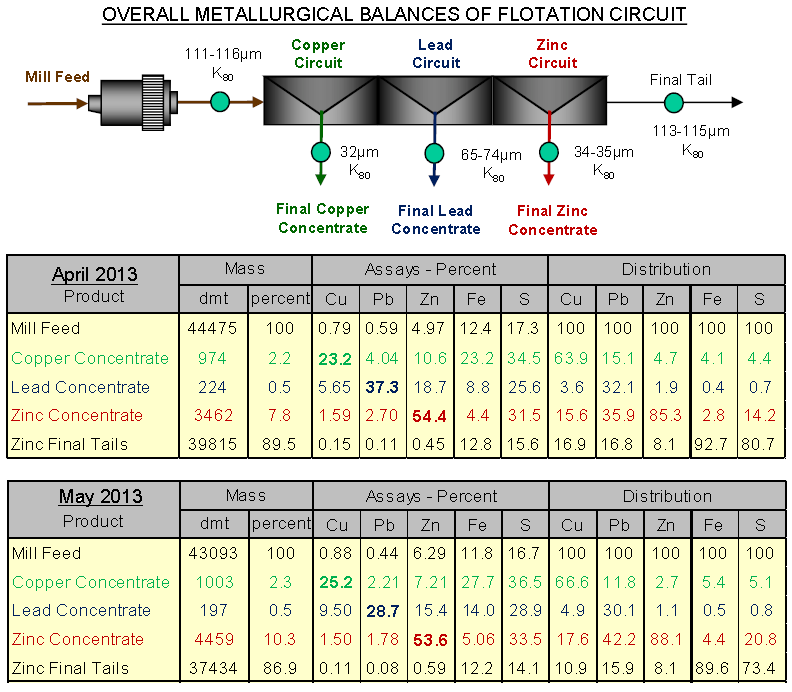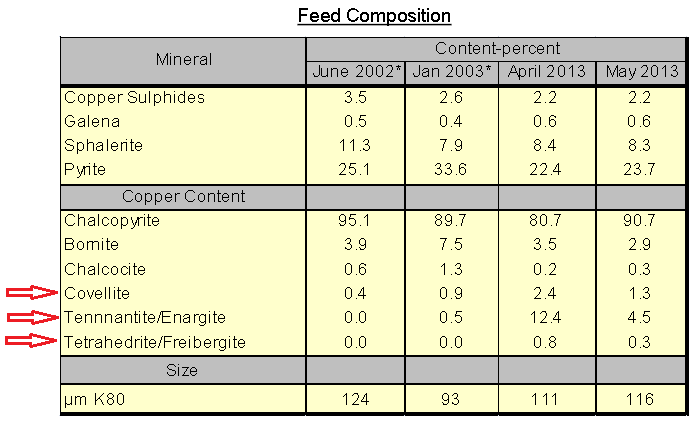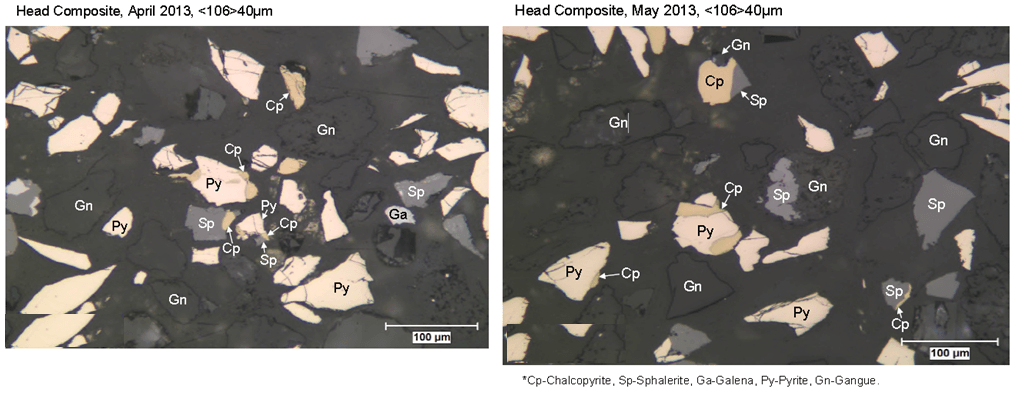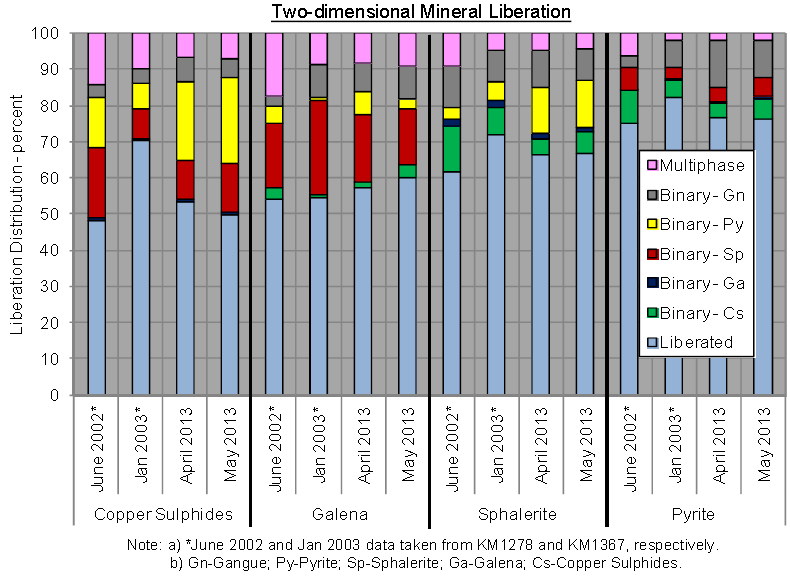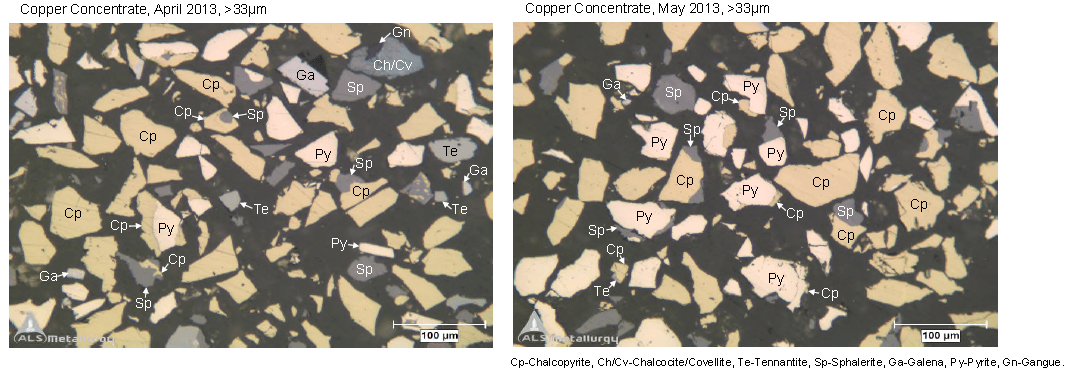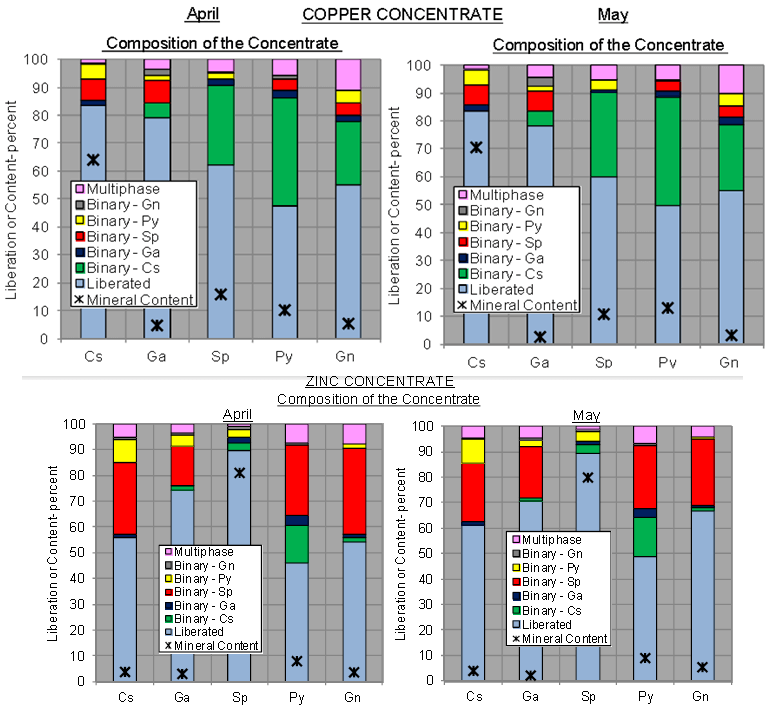Monthly composites of mill feed, copper concentrate, lead concentrate, zinc concentrate and final tailing were sent for detailed mineralogical/metallurgical analysis. These samples were analyzed and also compared to previous similar work done.
The samples represented the following flowsheet and monthly balance:
Mineral Speciation:
Although Chalcopyrite is still the main form of copper in all samples; the content of secondary copper minerals has fluctuated. Tennantite/enargite, a copper-arsenic sulphide mineral, as well as covellite, was present in significantly higher amounts in the 2013 samples earlier years. The presence of secondary copper minerals, especially covellite, may pose sphalerite activation problems due to dissolved copper from the minerals.
Tennantite/enargite contributes to elevated levels of arsenic, which may incur smelter penalties. Copper concentrates for 2013 both measured about 0.44 percent arsenic content. This is above typical levels where penalties occur. Tennantite and enargite are copper arsenic sulphide minerals that respond to flotation in a similar manner to other copper sulphides. As such, depression of these minerals would tend to result in depression of other copper sulphides.
Using all data, below is a clear trend between Covellite and Zinc recovered (activated) to the Copper Concentrate.
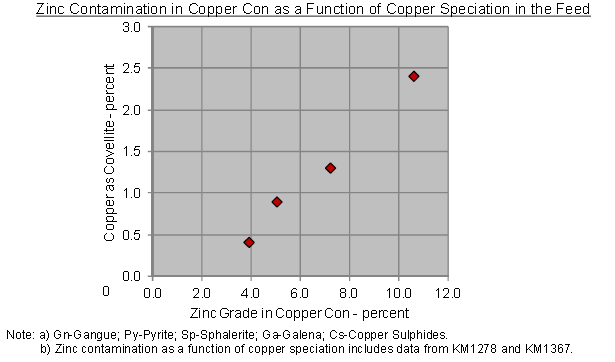
Mineral Liberations to Flotation Feed:
Mineral liberations for the two months were similar. The primary grind sizings for 2013 were much similar to 2002/03 and measured 111 to 116m K80. For copper sulphides, presented the poorest liberated mineral of interest in the feed, significant reduction of primary grind size would be necessary to achieve good liberation. Finer primary grinding would be expected to improve selectivity against both sphalerite and pyrite. It is estimated however that a primary grind size of 80μm K80, would produce copper sulphide liberations to increase by about 3 percent.
For simplicity, please look at the image below and focus on the Yellow bars comparing the locking of Pyrite with Copper Sulfides and Sphalerite in 2013 VS 2002/03.
The increase in Pyrite association is important.
Mineral Liberations to Flotation Cleaners (Regrind):
Here is a photo of the Copper Concentrate.
As it can be seen by the photo, the liberation has yet to be desired.
The Bar Graph below of the Copper and Zinc Concentrate, is a visual inventory of each Mineral and their association (liberated/locked in Binary or Multi Phase) where the status of locking between of Copper/Sphalerite with Sphalerite/Copper, Copper/Sphalerite with Pyrite and Copper/Sphalerite with Galena/Sphalerite is evident.
Regrinding to around 20um would help this situation.
Conclusions:
The copper circuit is key to the overall process, as poor performance in the copper circuit will influence the downstream processes.
The problematic: First, unliberated copper sulphides in the copper circuit that are not recovered will increase copper contamination downstream. Finer regrinding to liberate the copper sulphides will allow flotation of these particles while rejecting contaminants, decreasing both contaminants in the copper concentrate and copper contamination in lead and zinc circuits.
Second, liberated contaminants, specifically sphalerite, were observed in the copper concentrates. A relationship between copper deportment as chalcopyrite and bornite in the feed and zinc contamination in the copper concentrate was observed. Activation of sphalerite through dissolving of covellite and possibly tennantite/enargite is hypothesized. Only the use of MBS can reduce the impact of this natural Zinc Activation.
Unless further grinding and MBS is applied, both these problems in the copper circuit will likely have a continuing negative effect on metallurgical performance in lead and zinc circuits. Attempts to control Zinc and Arsenic recovery in the copper and lead circuit will hinder recovery and increase copper and lead contents in downstream circuits.

